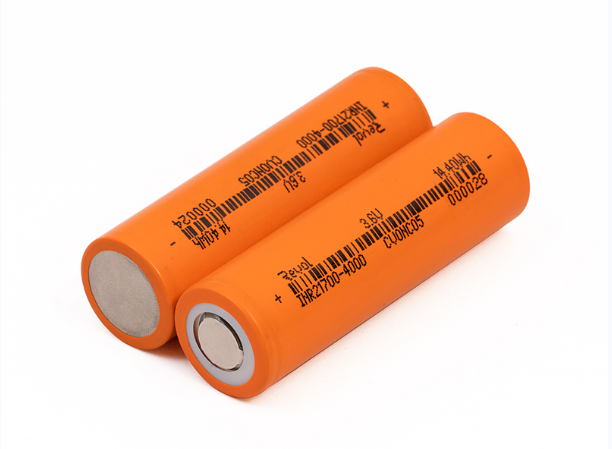21700 vs 18650 Battery, Comprehensive Comparison
Battery Dimensions and Design
The 21700 and 18650 refer to battery types differentiated by their dimensions. The 18650 battery measures 18mm in diameter and 65mm in length, while the larger 21700 battery is 21mm in diameter and 70mm in length. These slight differences affect compatibility with devices, as the 21700 is often used in larger applications or newer technology models.
What Are 21700 Batteries?
The term "21700 battery" refers to a rechargeable lithium-ion cell with a 21 mm diameter and 70 mm length, similar to the way the 18650 cell is named. As more electronic devices move toward lithium-ion power sources, this size gained popularity, particularly in electric vehicles like Tesla cars and electric scooters.
- 21700 battery is short-hand for a rechargeable, lithium ion battery that is 21 mm in diameter and 70 mm long.
- The big advantage of a 21700 battery over an 18650 battery is the overall energy capacity possible.
- 21700 batteries are able to reach a maximum capacity of 5000mAh.
Capacity and Energy Density
A major difference between the two is in capacity. The 21700 battery generally has a higher capacity, typically ranging between 4000-5000mAh, while the 18650 battery usually holds around 2500-3500mAh. This higher capacity gives the 21700 an edge in energy density, allowing it to power devices longer without needing frequent recharges.
Voltage and Discharge Rates
Both 21700 and 18650 batteries generally operate at a nominal voltage of 3.6V to 3.7V. However, the discharge rate, or how quickly they release stored energy, can vary depending on the manufacturer. Many 21700 batteries feature higher discharge rates, making them ideal for high-drain devices, such as electric vehicles or power tools, where sustained energy release is crucial.
Lifespan and Cycle Durability
When it comes to lifespan, the 21700 typically outlasts the 18650 due to its larger size and improved technology. Both types have a cycle life that depends on how they're used, but 21700 batteries often offer more recharge cycles before their capacity diminishes significantly. For heavy users, this longer lifespan can translate into fewer replacements over time.
Thermal Performance and Heat Management
The 21700 battery often boasts better thermal management, meaning it handles heat more efficiently than the 18650. This difference is especially beneficial in devices that run for extended periods, as high temperatures can impact battery life and safety. The 21700's design often incorporates newer materials and manufacturing techniques that enhance its ability to withstand and dissipate heat.
Applications in Various Devices
The 21700's higher capacity and durability make it suitable for devices requiring high energy output, such as electric vehicles, e-bikes, and larger electronics. The 18650, meanwhile, is commonly found in flashlights, laptops, and smaller devices due to its compact size and still-respectable energy output.
Charging Times and Methods
Due to its larger capacity, the 21700 may require a longer charging time compared to the 18650. However, many 21700 batteries support fast charging technologies to mitigate this, which may result in quicker overall charging times. Both batteries require compatible chargers, and users should ensure they match charging voltages to avoid potential damage.
Cost Comparison
On average, the 21700 battery is more expensive than the 18650 due to its larger capacity and advanced features. However, the higher initial investment may be worth it for users needing longer-lasting power and more recharge cycles, making it more cost-effective in the long run for demanding applications.
Weight and Portability
Weight differences are minimal but can impact device portability. The 21700 battery is slightly heavier than the 18650, which could be a factor for portable devices. However, in larger applications where weight isn't a significant constraint, the 21700's additional power is an advantage.
Safety Features and Precautions
Both batteries have built-in safety features like overcharge and short-circuit protection. However, due to its larger capacity, the 21700 may pose greater risks if mishandled, making adherence to safety guidelines essential. Users should avoid exposing batteries to extreme heat, use compatible chargers, and handle them carefully to ensure safety.
Market Availability and Trends
The market demand for both 21700 and 18650 batteries continues to grow. However, industry trends show a shift toward 21700 batteries, especially in electric vehicles and other applications requiring high power density. The 18650, with its established use in smaller electronics, remains widely available.
Environmental Impact and Sustainability
Both battery types impact the environment through resource extraction, manufacturing, and disposal. Many manufacturers are pursuing sustainability initiatives, including recycling programs and eco-friendly materials, to reduce this impact. Proper recycling is crucial for minimizing environmental harm, as lithium-ion batteries contain materials that can be repurposed.
Conclusion
When choosing between a 21700 and 18650 battery, it's essential to consider device compatibility, energy needs, and budget. The 21700, with its larger capacity and better thermal performance, is ideal for high-drain, long-lasting applications. In contrast, the 18650 is still a reliable and cost-effective option for smaller devices. Select the one that best aligns with your specific requirements for optimal performance and longevity.

Comments
Post a Comment